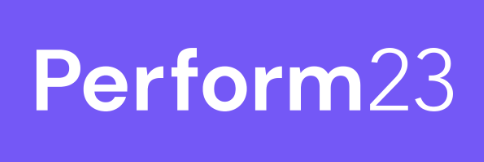The Role of a Money Manager and How Finance Supports Them
- 0.5
- 1
- 1.25
- 1.5
- 1.75
- 2
Jennie Rush: My name is Jennie Rush and today I'm going to talk about the role of a money manager and how finance supports them. Just a little bit about myself. I have been with Kiewit Corporation for 11 years. This is actually my first accounting and finance role and I've been in it about six years now. Off to the right, you can see my family. My husband Jim, he is a firefighter back in Omaha, Nebraska. Then my two and a half year old mini Goldendoodle Charlie. Then when we are not working, we are avid bicyclists, so we do a lot of cycling in the Midwest. In July, we will be participating in our 14th RAGBRAI. If you guys don't know what that is, it is a seven- day bike ride across the state of Iowa. Who is Kiewit? Kiewit is one of North America's largest and most respected engineering and construction organizations. Our construction and design engineering professionals work on some of the industry's most complex, challenging and rewarding projects. We belong in seven markets, building, industrial, mining, oil, gas and chemical, power, transportation and water. To design and build some of the largest and most innovative projects in the world, Kiewit relies on advanced and modern technology and software. From implementing and adopting existing software and programs to designing and engineering new technologies, Kiewit's Technology Group provides the field with the technology solutions, tools and support they need to help Kiewit reach its goal of being the best contractor on earth. Here's the agenda for today. We're going to talk about what is Kiewit Technology Group, or the acronym we call KTG. Money manager responsibilities. We're going to talk about how the finance team supports KTG and what's next for finance. Kiewit Technology Group is an overhead department that doesn't generate a lot of revenue, but we do have a significant budget that we must adhere to. We have 27 money managers in the tool that are actually active, so they are going in and they are making changes in their OPEX template at all times. Of those 27 money managers, we have 30 different departments, and some of those departments include architecture, data enablement, network services, and software, just to name a few. With those 30 different departments, we have over 130 different call centers and that number is changing daily. A money manager is someone within KTG that manages a portion of our budget. They are responsible for continuously reviewing their actuals and comparing to their budget and projections, compiling a budget for the upcoming year, which we usually begin in late August, and then have it submitted by early November. Reviewing and approving invoices for cost in their areas, ensuring their forecasts are accurate monthly and that they're successfully tracking to their budget. Working with the finance team primarily myself to address transfers, terminations, hires, contractor actions. All that is done with me working with the managers as well as our human resources. Lastly, reviewing monthly variances with the finance team. Our managers are required to provide a comment for any variance that is 5% and 25, 000 to the good or bad of their projection. Here's a little bit about what our hierarchy looks like. This first screenshot shows our rolled up level. We have five C- level executive areas, and then we have 26 different company codes, three countries and 30 states with employees in them. As you can see in this screenshot, we have six different money managers reporting up to Brett Bock, who's one of our C- levels. Ed Anneberg's area is quite complex with 14 different cost centers to manage. We have people working across the US, Canada, and Mexico, so we must make sure we have the correct company code and cost centers to account for people's locations, especially for tax purposes. Our workforce changes a lot, so sometimes if someone is in one state under one money manager and they need to move to another department, we do have to create another cost center in that new department and that happens quite often. Here is our KTG financial calendar and my team specifically lives and breathes by this calendar. It is May, and so we just had our month- end close on Friday, May 5th, and then this Monday I rolled the month in Planful, which basically changes the April forecast to our April actuals. Then the rest of the week, I have about 14 to 15 variance meetings that I have with our money managers. As you can tell, I'm here and not there, so I've had some help back home. Then the following week, I have four C- level review meetings where I discuss that a little bit more in my presentation. But then by end of day on May 18th, our money managers are required to have all their updated forecasts done in our current forecast scenario. From there, we take a copy of that current forecast and we create our May projection. They have to have a good understanding of what they're going to have still submitted by month end on May 27th. Here's a screenshot of what our variance report looks like in Planful. As I stated earlier, a variance is at least 5% and 25, 000 to the good or bad from what they projected versus their actuals. As you can see, we've actually added a variance check column to pop that variance out and show our money managers what they need to speak to. We actually use Dynamic Commentary to assign tasks to our managers when they have variances. Any variance in labor, I actually go in and provide the details to our managers, but otherwise anything else they need to go in and provide variance comments. Here's an example of what the task looks like on the left. We actually assign a deadline which correlates with their variance meeting, and then the money managers comment on their variance tasks. Once I've assigned all of them out, I send an email reminder to all of the money managers. Normally, between our money managers, it will determine if they already know what their variance is or it's a good reminder that they need to go in and see what costs hit. When we started using the variance report, we did have some challenges with Dynamic Commentary. We would actually have the managers go in to the report and enter their comments, and what we found is that the money managers would actually... The comments would disappear as the money managers were in there at the same time. I would reach out and ask them, go ahead and put in your variance comment. They would say, I've already done it. I would say, I couldn't see it. We had a little bit of frustration and some rework, but once we got that figured out, they were way more receptive to using it. What I like about Dynamic Commentary is it provides us the tools to be more successful in the meeting. When I'm enabling them to go in and look at their variances ahead of time, that allows us to have more time in the meeting to discuss other things that come up or just talk more about some of the new features in Planful. Another feature about Dynamic Commentary is all the notifications are done through your work email. If you're assigned a task, if you close a task, if you reply to the task, all of it's done through your work email. Everybody's in their work email anyway so it's a pretty good feature with that respect to it. Here's the agenda for our variance and C- level meetings. First, we'll talk financials, and as I stated earlier, anything with labor, I identify what the variance is and share with the managers. Sometimes we do have costs that hits the wrong general ledger account, so we do have to do cost moves to get that corrected. Then other times, we find costs that hit their area incorrectly or they didn't have it hit sooner than expected. That actually happens quite often when you are processing and paying invoices. Then we talk workforce. Our department is ever- changing, so normally there's an HR update happening with each money manager. I compile a list of all changes and hang onto it until the following week when I meet with their respective C- level. Lastly, I share updates from the finance team. It could be as simple as a projection reminder or I do actually share new features that Planful rolled out. In April, I showed everyone the snapshot feature, which got a lot of excitement. C- level meetings are run very much like the variance meetings. I go over all the money managers, financials and workforce changes with their respective C- levels to get approval. Sometimes it's just making sure that I can change a position start date for an open position, or other times some of the managers have positions that they want to get added into the budget and that does require an approval. Once I have all of that approved, then I can go in and make my HR changes in Planful. Here's how our HR template is set up. We do have it locked down to our administrators. There's two of us that have access, with 27 money managers, the data would never be accurate and consistent, so they only have view only access, and then we make the changes. We also have unique fields in our HR template that aren't in our ERP system. I have those down below so you can see duplicate position is something that we use to capture when we have conversion contractors that we're going to convert to full- time employees. We use that for headcount tracking. Taxability is one that we use for our contractor vendors because some of the vendors are taxable and some of them are not. Then the other ones over here, we've added recently to account for some of the big projects that we have happening this year. Then here is the rest of our attributes. One of the things that we noticed in 2022 was that we were not correctly budgeting for cost of living adjustments. We were able to add a compensation item to capture that additional employee cost. Whether it was a fixed amount or a percentage of the employee's salary. This year, we've had a significant change in how KTG is supporting Kiewit districts and how employees need to allocate their time. We've had to start using allocations to differentiate between KTG overhead and project allocations. As you can see in the middle of my screen, I've got one employee that's 100% KTG overhead, and then I've got another employee that is 10% overhead and 90% project allocated. One of the biggest accomplishments this year is reporting on employee allocations, so projected versus actuals. We have a lot of employees that are 100% project allocated, which means they should be coding all their time to WBS elements, supporting our field projects. Their costs should not be hitting their overhead cost center. As you can see, Billy is 100% project allocated in his HR record, but then we look at the report that we have, and if it shows 100% under percent KTG overhead, that means that they're 100% overhead cost. If they are blank, that means they're 100% project allocated. You can see here, Billy, Timothy and James are all 100% project allocated, but actually had costs hit our overhead cost center in March. Now our money managers have this report at their fingertips and they can easily see this. We can get time entry corrections submitted and hopefully eliminate rework and overages in our labor. Reporting is used the most in Planful. Our money managers, actually that's one of their favorite features about it. We have a good structure set up for our users that helps one, find things easier, and two, ensure that we don't have users creating reports all over the place. Our organization is a filing system granting permissions to users as needed. Just some of the reports that we have here. The folder one is financial reports, which is used mostly for all of our money managers. We have some workforce reports and we're starting to use that more now that we have employee allocations, employee actuals, that type of thing. Our ITFM reports, that's actually used for our managers meetings that they have so they store all the reports that we use in that meeting in there. Then money manager reports is basically, we have a lot of managers that use reports daily, and so they wanted their own folder. They wanted access to everything so that they can just pull their reports at their fingertips. Anytime they ask for a new report, we can go in there and it's based off the access, so it's user specific. Here's a few quotes about what our users think about Planful. I will be 100% honest. Some of these quotes came from money managers that used to call the tool painful instead of Planful. As you read the quotes, you can now see that these same money managers heavily rely on the data that Planful provides at the click of a button. We're finally getting to a point where side spreadsheets are diminishing and we're trusting the tool to do the work for us. But it wasn't always that easy to get them to use the tool. We needed to get their buy- in. So how did we do that? We started by asking what they wanted to see. What side spreadsheets did they have? What more did they want the tool to do that it wasn't doing for them? It was essentially their wishlist. Then I would compile that and I would go to Planful and ask, could it be done? If it could, I'd get it implemented and show them the results. If not, I'd explain why, and then I'd find out if it was maybe a possible enhancement on Planful's roadmap. We would communicate regularly about Planful, so they would get monthly deadline reminders, new feature emails. The more that we talked about Planful, the more they were understanding of how important the tool was. Senior managers, C- levels and our vice president meet every other Tuesday in their manager meeting and they talk about headcount, financials. All that data comes from Planful, so it's important that they trust the data that they're seeing in those meetings. Lastly, we did make it a condition of employment if they manage a portion of our budget. Here's what next for the finance team. Workforce actuals is something that we just rolled out a couple of months ago, so we're going to continue fine- tuning that. I am going to revisit the workforce automation, and if any of you have successfully implemented that with your ERP systems, I would love to know. We have a lot of exceptions so to speak, and so while we were trying to test this, we hit some roadblocks and so we put it on pause. But it is something, since I primarily do all the HR changes, it's something I would like to revisit. Then you guys have probably heard them talk about the business user experience quite a bit at the conference. That's something I still want to tackle and see how I can continue to get our money managers engaged and excited about the tool. They've been saying it is a team sport, so we always have to reiterate how good the tool is and what it's truly doing for us. That's it. Does anyone have questions? Okay, thank you.
DESCRIPTION
The Kiewit Technology Group is a large department with an ever-changing workforce and increasing technology software spend. Managing KTG’s significant budget is crucial to the success of the organization. Join Jennie Rush, Finance Supervisor, and her colleague, Angel Woodard, IT Controller, as they discuss KTG’s critical financial processes and how they have utilized Planful to support the goals and objectives of their Money Managers. Through the coordination of financial deadlines, variance meetings, unexpected workforce changes, and extensive financial reporting, Jennie, and Angel leverage Planful’s capabilities to fulfill the financial management needs of the department. Jennie will also share tips and tricks that will add value to your use of Planful. Do not miss this informative session!








